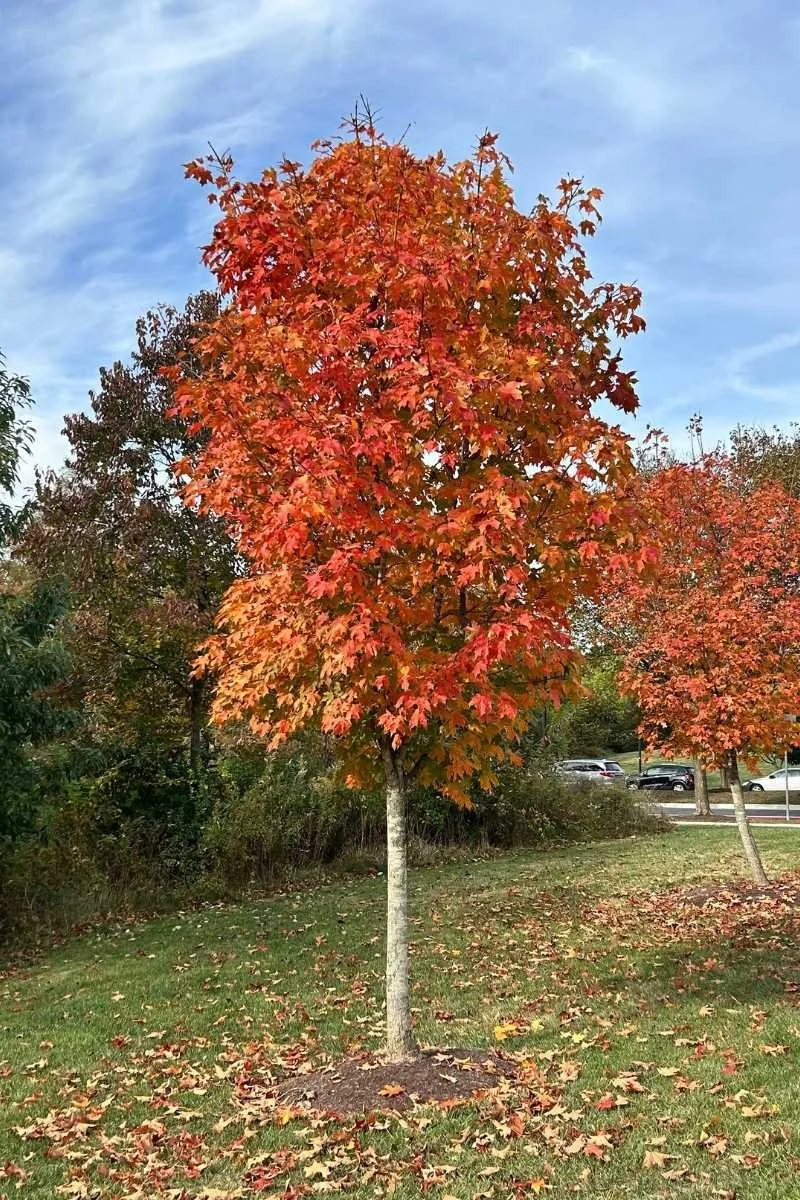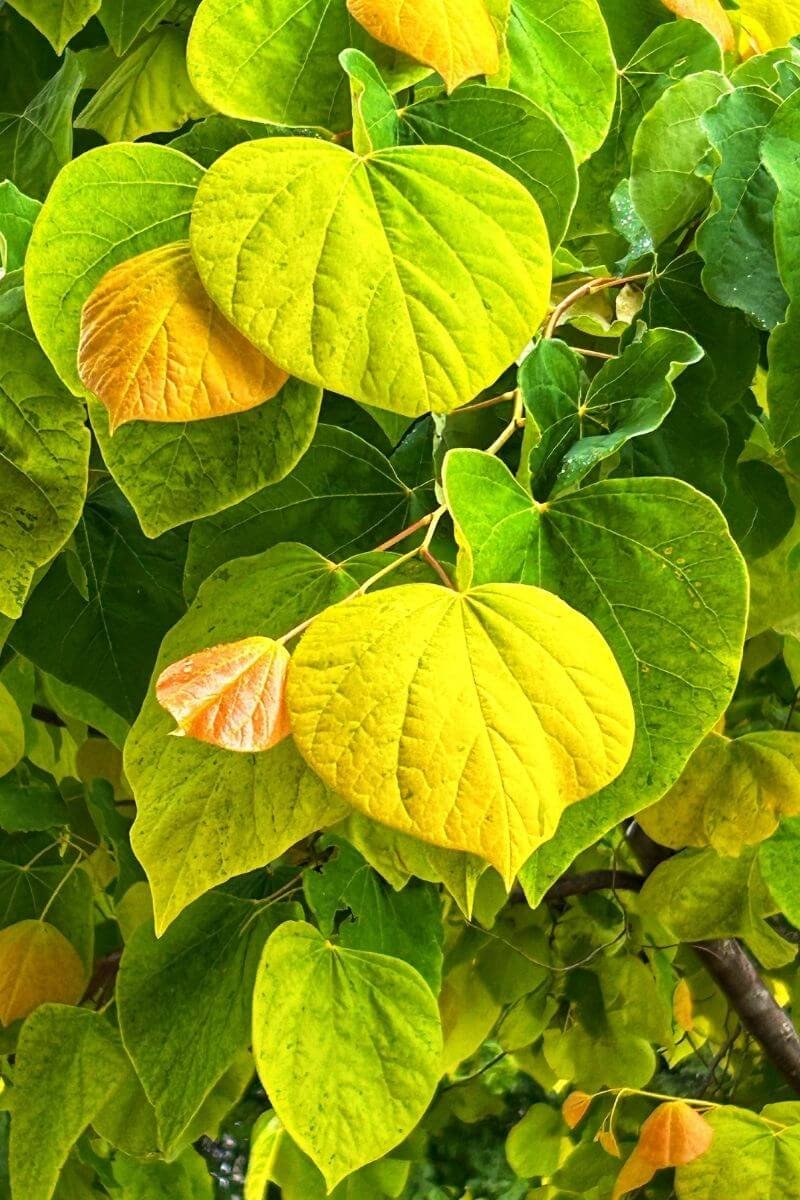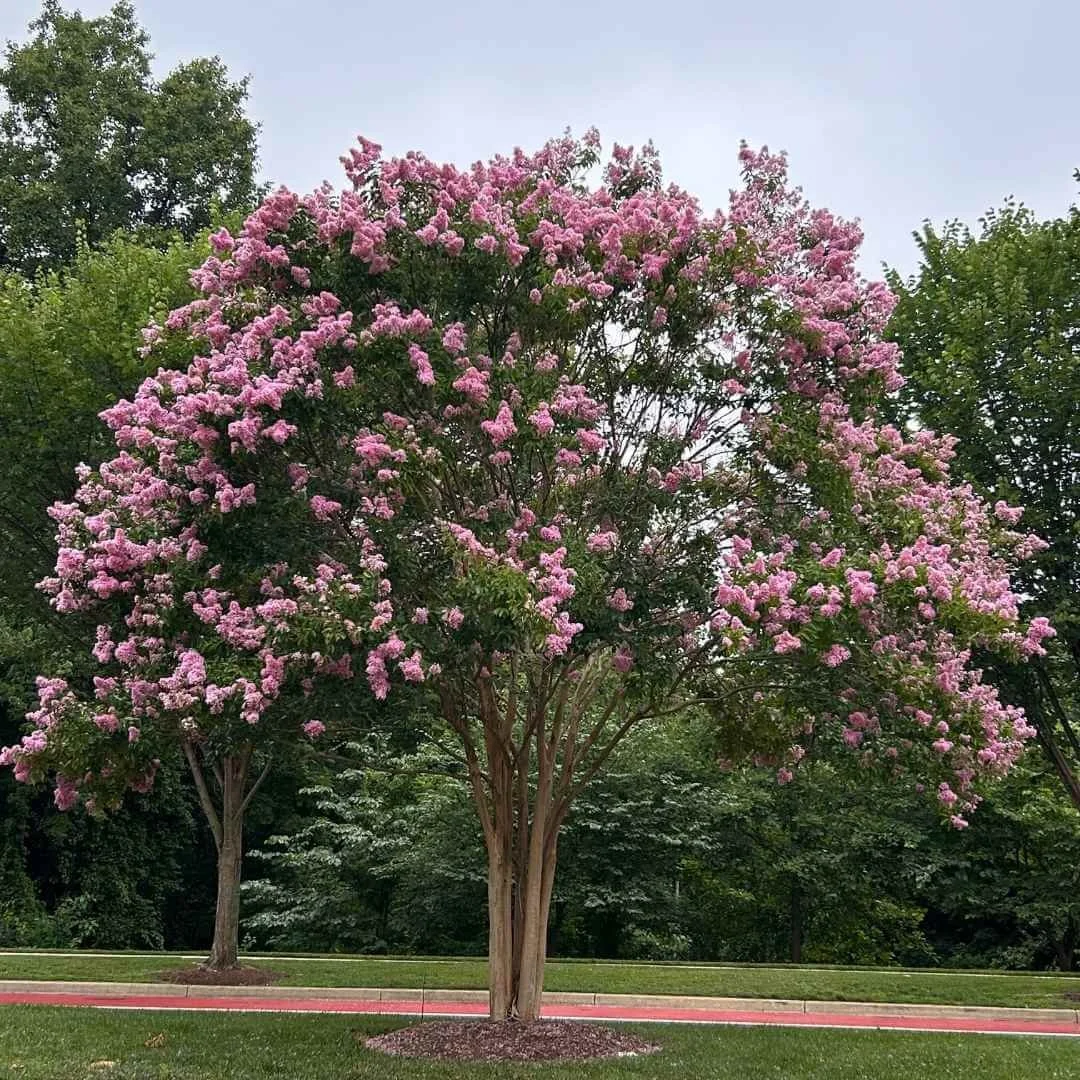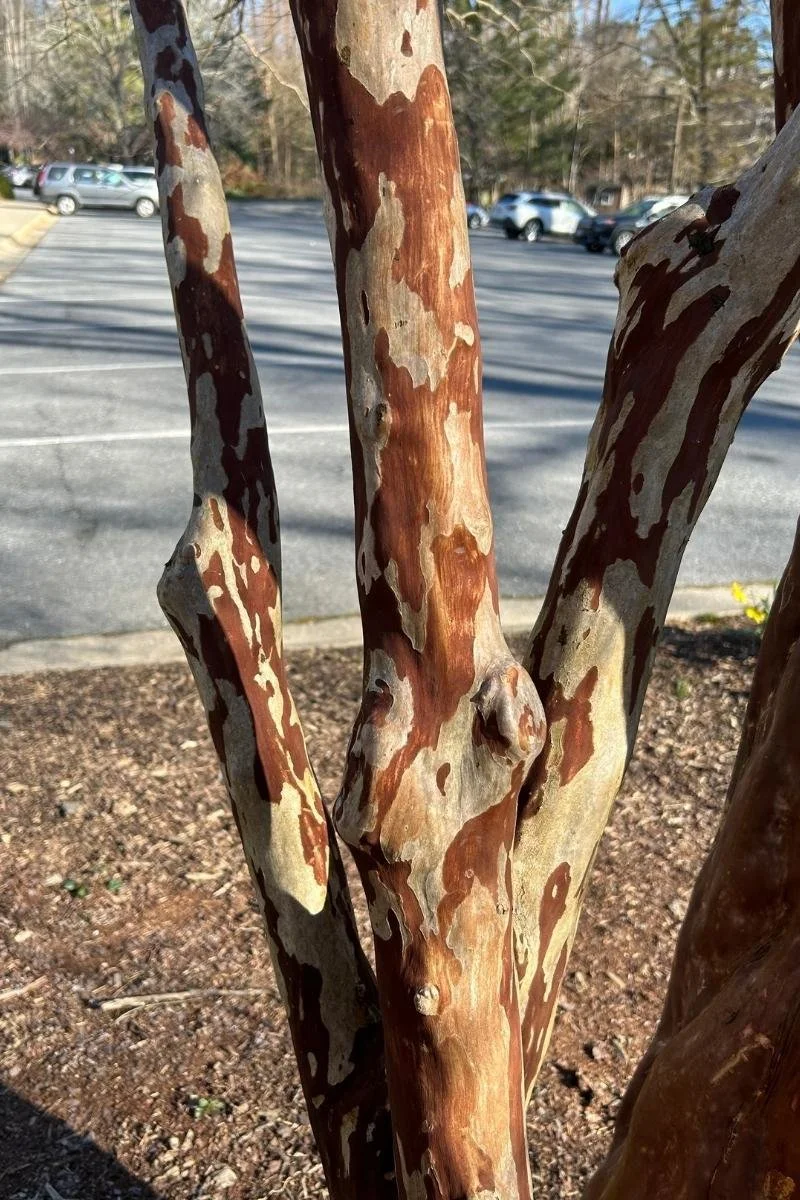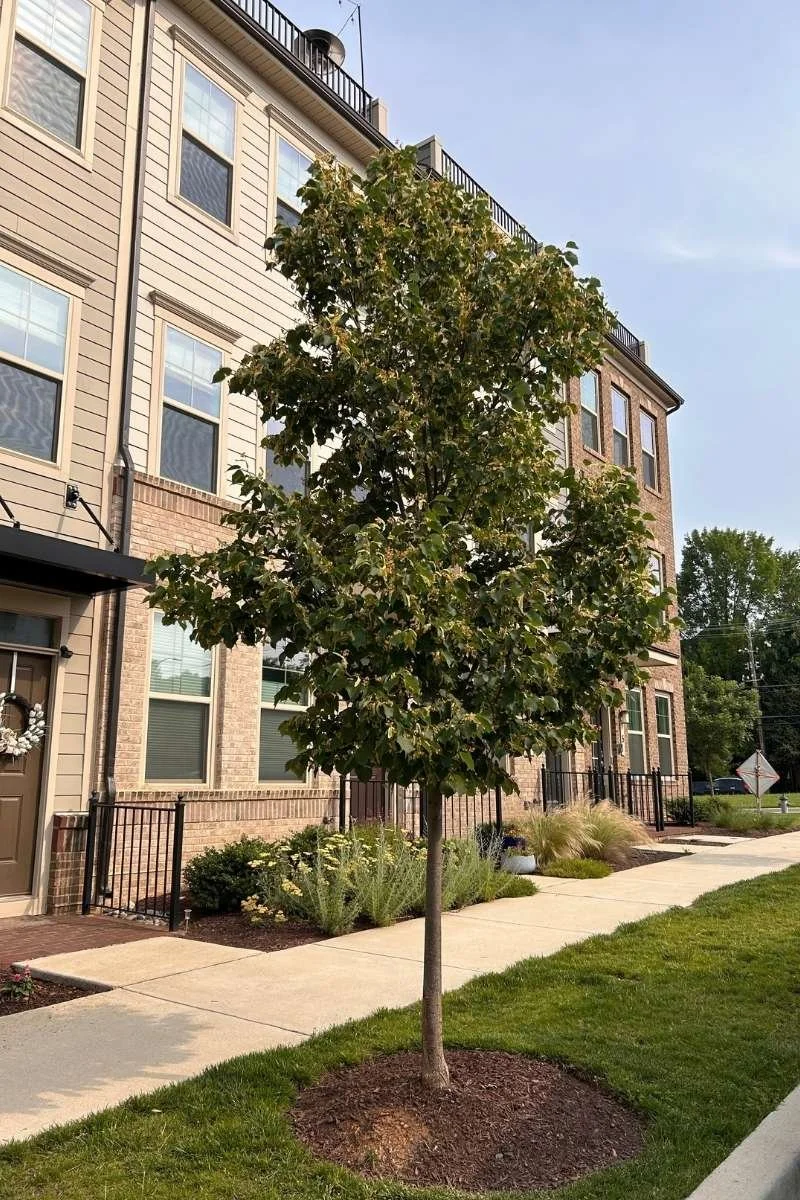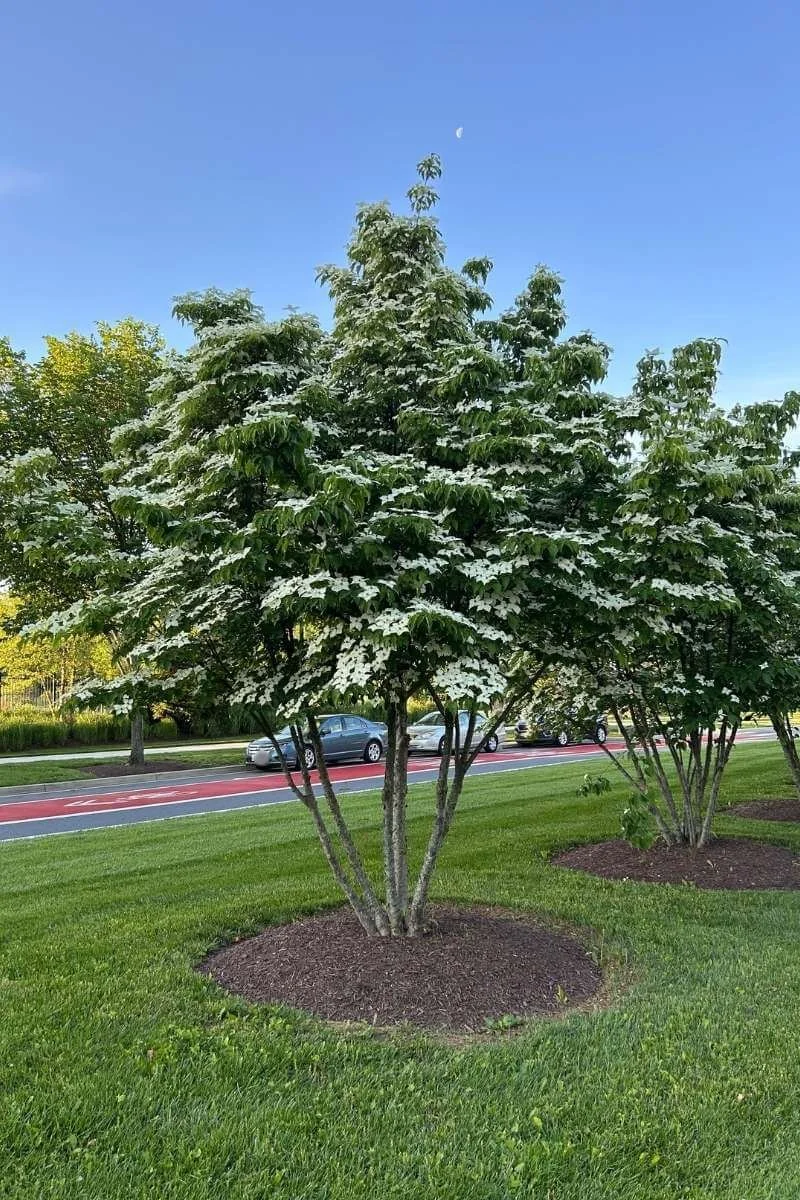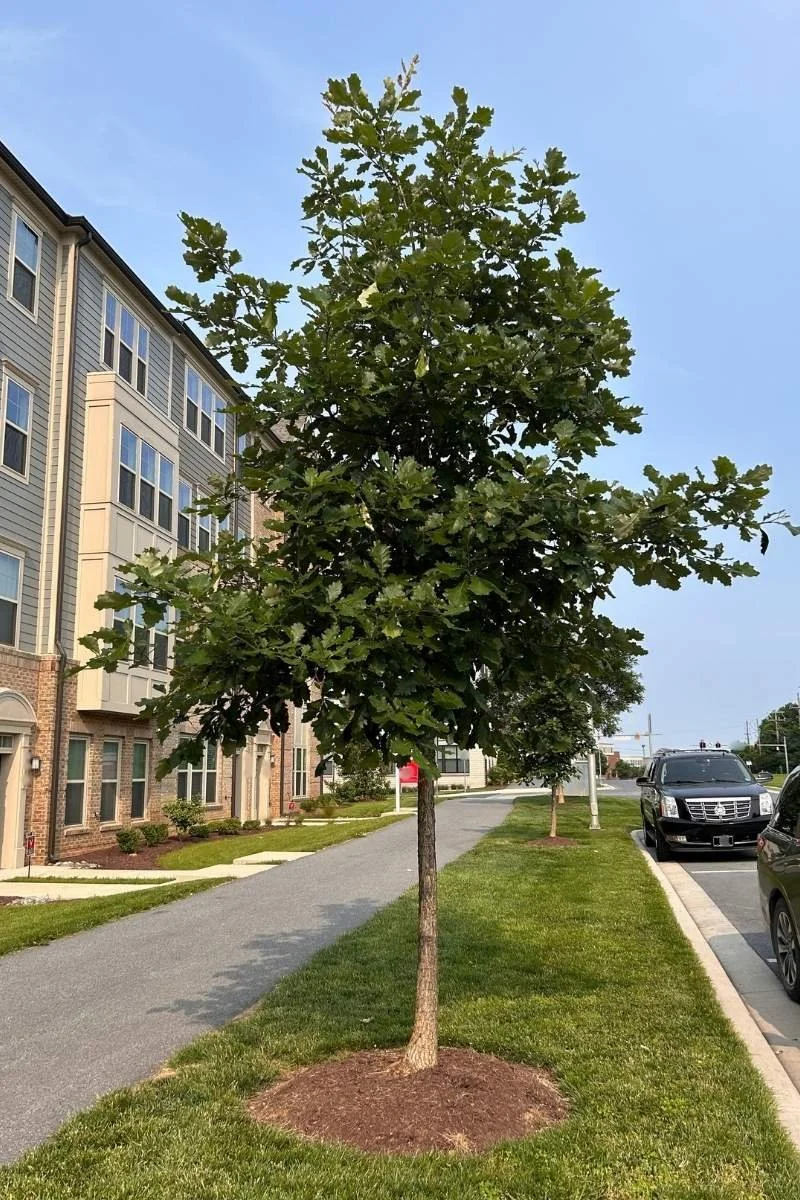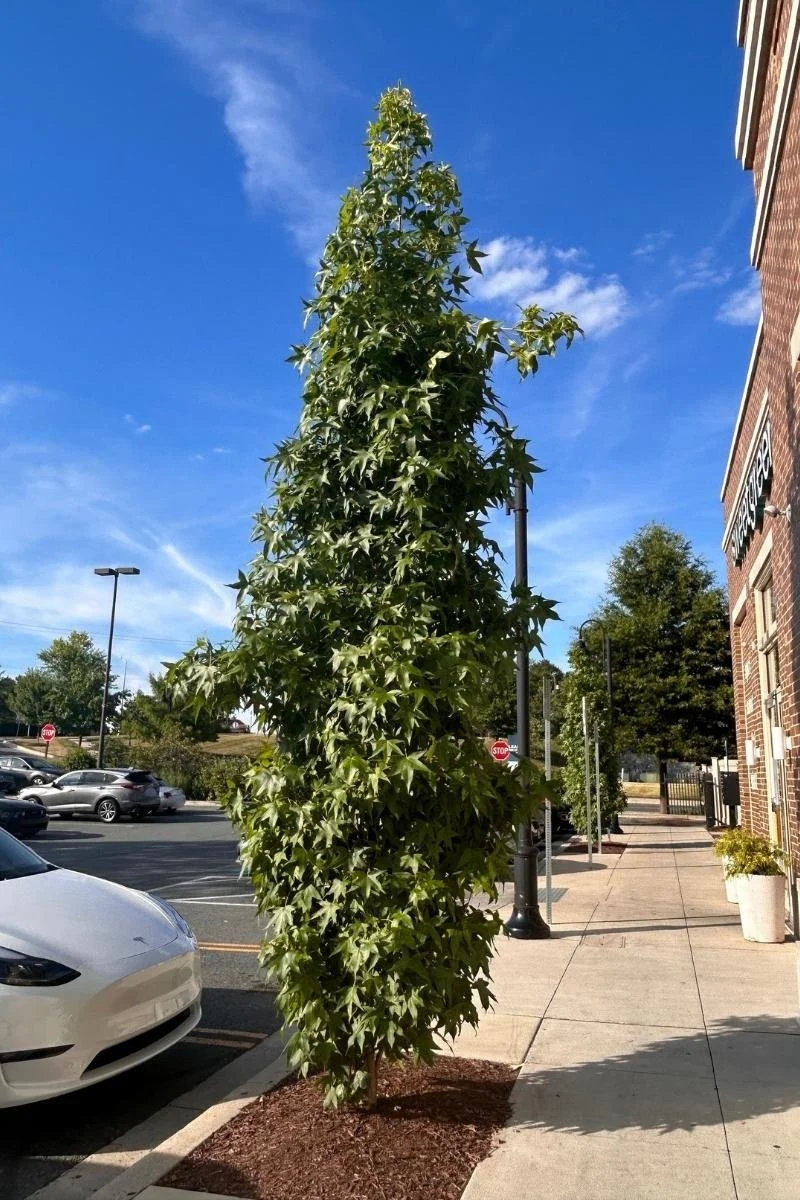Trees for Zone 7: Find Your Perfect Match
This post contains affiliate links, marked with an asterisk (*). If you click the link, I may receive a small commission at no extra cost to you - please see my policy on affiliate links. As an Amazon associate, I earn from qualifying purchases.
If you're dreaming of adding beauty, value, and personality to your home, one of the best investments you can make is planting the right tree. As a landscape designer, I can tell you that trees do more than just look good - they literally add thousands of dollars to your property value, create shade that lowers cooling costs, and give your home that established, welcoming feel that makes it stand out in the neighborhood.
But here's the thing: not just any tree will work in your zone 7 yard! When it comes to zone 7 trees, thoughtful selection makes all the difference. You need to consider your specific conditions. Do you have a sunny spot or a shady corner? A wet area or well-drained soil? A compact front yard or a sprawling back lawn?
The good news is that zone 7 offers one of the best climates for tree diversity. With relatively mild winters and warm summers, you can grow everything from Southern favorites like crape myrtles to Northern classics like maples. This sweet-spot climate opens up a world of possibilities!
In this guide, I'm sharing ten of my go-to zone 7 trees for different situations and landscape needs. These aren't just trees that will survive in zone 7 - these are trees that will absolutely thrive, giving you years of beauty with minimal fuss. Whether you're looking for zone 7 trees that grow in shade, zone 7 trees for full sun, or something in between, you'll find options that fit your space and style.
October Glory Red Maple (#3 on this list)
When I work with clients, I always emphasize that a tree is a long-term investment, not something to grab on a whim at the garden center. Take time to measure your planting area and consider the mature size. Think about how the tree will fit with your home's architecture and the layout of your yard. A tree that's perfect for a spacious backyard might overwhelm a small front entryway, while a compact specimen might get lost on a large property.
Another key piece of advice: timing matters. The best times to plant trees are spring and fall, when temperatures are mild and the tree has a chance to settle in before facing summer heat or winter freeze. Many garden centers offer seasonal specials and even professional planting services, which can be a great help if you're new to gardening.
Before you start digging, it's important to make sure your planting spot won't interfere with underground utilities. Hitting a gas, water, or electrical line can be dangerous and costly. Most areas offer a free hotline that will send someone out to mark underground lines. A simple phone call can ensure you (and your wallet 😉) are protected!
And just be sure you are ready to commit! New trees need consistent watering for their first two years. If you're planning an extended vacation, especially in summer, make arrangements ahead of time so your young tree won't suffer while you're away. Read "Landscaping Basics: How to Water a Tree" for more information.
Also, don't forget about long-term care. Partnering with a certified arborist for routine check-ins is one of the smartest things you can do to protect your investment and keep your tree looking healthy and beautiful year after year. An arborist can help with pruning, pest management, and overall tree health, ensuring your zone 7 tree continues to add curb appeal for decades to come. Visit the International Society of Arboriculture's website for help locating a credentialed arborist in your area.
Now let's dive into my top ten zone 7 trees and find your perfect match!
1. Best for: Spring Flowers
Eastern Redbud
Cercis canadensis
Size: 20-30 feet high and 25-35 feet wide
Light: Full sun to part shade
Welcome spring to zone 7 with the Eastern redbud tree.
The sight of rosy purple flowers emerging alongside the light green foliage of other trees makes my heart soar after a long winter, and that's exactly what the eastern redbud delivers. This graceful native tree puts on an unforgettable spring show with its rose-purple blooms that appear directly on the branches before the heart-shaped leaves emerge.
Eastern redbud is a small to medium-sized tree that likes consistent moisture and can handle full sun to part shade - just know that it will develop a more open, spreading shape in shade and a denser form in sun.
I love using it as a specimen tree in the front of the house or near a backyard patio. If you have the space, a mass planting of three redbuds creates an incredible spring impact, or you can combine them with other spring-flowering trees like dogwoods and serviceberries for a woodland garden effect.
Cercis canadensis is the native species as found in the wild, but there are also many colorful cultivated varieties like 'Merlot’, The Rising Sun™, and Midnight Express® if you want something with unique foliage color. Check out our article about the Eastern redbud tree for more details on growing this zone 7 beauty.
The Rising Sun™ redbud shows off its heart-shaped foliage in shades of apricot, yellow and green.
2. Best for: Summer Flowers
Crape Myrtle
Lagerstroemia indica
Size: Varies widely by cultivar - check tags
Light: Full sun
‘Muskogee’ Crape Myrtle
When almost no other trees are flowering in the heat of summer, crape myrtle puts on a spectacular show. These easy-to-grow, sun-loving zone 7 trees come in many different varieties with flowers in shades of white, pink, lavender, and red. Beyond the blooms, you'll get pretty bark that provides winter interest, a graceful multi-stemmed shape, and nice orange to red fall color, too.
Here's my pro tip: crape myrtles come in all different sizes, so check the tag and make sure the mature size fits your space! As the tree matures, the canopy will cascade over and get quite wide, so it's not the best choice for planting right next to the house or buildings. Instead, I plant crape myrtles in the middle of the lawn as specimen trees where they have space to spill over gracefully and be the star of the show.
Popular varieties include 'Natchez', a large tree with gorgeous bark and white flowers; 'Muskogee' with lavender flowers; and 'Dynamite' with bright red blooms that really live up to the name!
The smooth, peeling cinnamon and tan bark of the ‘Natchez’ crape myrtle brings year-round beauty to zone 7 landscapes.
3. Best for: Fall Color
Red Maple
Acer rubrum
Size: 40-70 feet high and 30-50 feet wide, sometimes taller
Light: Full sun to part shade
Red Sunset® Maple lives up to its name with reliable, stunning fall color in zone 7.
If you want dependable, show-stopping fall color in zone 7, red maple is your tree. This easy-to-grow native loves evenly moist soil but tolerates drier conditions and clay soils surprisingly well. It's a fast-growing shade tree with a rounded crown, making it perfect for newly built houses with large empty yards that need some maturity fast.
Red maple grows on the larger side, so give it space! It also has a shallow root system that will eventually outcompete grass and can heave nearby hardscaping, so keep it away from the house, driveways, and patios. I recommend planting red maple in a large lawn area or along the perimeter of a bigger backyard where it can really spread out and show off.
Acer rubrum is the straight native species, but it doesn't have as reliable and spectacular color as the cultivated types. My go-to selections are 'October Glory’, Red Sunset®, and Autumn Blaze® - all bred for their amazing, dependable fall display that will make your neighbors stop and stare.
4. Best for: Bees
American Linden
Tilia americana
Size: 60-80 feet high and 30-60 feet wide
Light: Full sun to part shade
This young American linden will grow into a stately shade tree beloved by bees and birds.
American linden, also called basswood, is a large shade tree with many wonderful qualities. What really earns it a spot on this list are those fragrant pale yellow flowers in late spring that are an absolute bee magnet! I'm talking hundreds of bees happily buzzing away, helping to produce some of the finest honey around. Birds love this tree too, feasting on the nutlets it produces each summer through fall.
This low-maintenance native thrives in full sun to part shade and is easy to grow, but it's large - we're talking 30+ feet in width at maturity - so it's best suited for larger yards and properties that can accommodate its size.
If you have the space, American linden offers high wildlife value and creates a beautiful, fragrant shade tree that benefits your entire landscape ecosystem.
5. Best for: Afternoon Shade
Kousa Dogwood
Cornus kousa
Size: 15-25 feet tall and wide
Light: Full sun to part shade
Kousa dogwood's creamy white blooms float gracefully above the branches in late spring.
This elegant tree is my go-to recommendation for those tricky spots that get morning sun and afternoon shade, a lighting situation that stumps a lot of homeowners but is actually perfect for Kousa dogwood. It blooms in late spring with creamy white, star-shaped flowers that appear after the leaves have emerged, creating a soft, horizontal floating effect across the layered branches. It's absolutely stunning!
Unlike some native dogwoods, Kousa dogwood is more resistant to disease and thrives with that ideal combination of morning sun and afternoon shade, making it invaluable for east-facing areas or spots that are shaded by buildings or larger trees in the afternoon. You'll also get gorgeous scarlet fall color that rivals any maple.
I love using Kousa dogwood in the front yard as a specimen tree, as a backyard patio tree, or in any bird garden since birds love the raspberry-like fruits. It's also perfect for fire pit areas that are used in spring and fall, giving you beautiful blooms and amazing color during your outdoor gatherings.
**🌳 Shop this Tree 🌳**
6. Best for: Small Yards
Little Volunteer Tulip Poplar
Liriodendron tulipifera ‘Little Volunteer’
Size: 30-35 feet tall and 18-20 feet wide
Light: Full sun
The Little Volunteer tulip poplar. Image courtesy of PlantHaven International, Inc.
Tulip poplars are gorgeous trees, but their very tall size isn't ideal for most residential lots. Enter Little Volunteer, a small poplar variety sized just right for smaller yards. This dwarf variety of the classic tulip tree has the same beautiful, uniquely shaped leaves and tulip-like flowers in early summer, but in a much more compact form.
Reaching 30-35 feet tall and only 18-20 feet wide, it has a tidy, upright habit that's easy to fit into front yard spaces without overwhelming the house or blocking views. It brings all the beauty of a traditional shade tree, just scaled down to a more manageable size!
Little Volunteer® is a zone 7 tree for full sun and is also incredibly low-maintenance, bringing seasonal interest from spring through fall. The bright green, glossy foliage stays attractive all summer long, then turns golden yellow in autumn. Its neat shape makes it perfect for front yard landscaping, especially if you want something that adds vertical height without sprawling too much.
Beyond its good looks and manageable size, tulip poplar also offers high wildlife value. Its flowers provide nectar for pollinators and hummingbirds, and its leaves provide nesting cover for small birds as well as hosting the larvae of several insect species.
The signature tulip-shaped flowers of Little Volunteer appear in early summer. Image courtesy of PlantHaven International, Inc.
**🌳 Shop this Tree 🌳**
7. Best for: Easy Cherry Blossoms
Okame Cherry
Prunus x ‘Incam’
Size: 15-25 feet high and 15-20 feet wide
Light: Full sun
Okame cherry delivers stunning hot pink blooms and thrives in heat, humidity, and even clay soil.
If you've dreamed of growing a flowering cherry tree but worry about finicky care requirements, let me introduce you to the Okame cherry, a resilient beauty that breaks all the stereotypes.
This tree stands out as one of the easiest cherry trees to grow, handling heat and humidity with ease, tolerating drought better than most cherry varieties, and welcoming a wide range of soil types - yes, even clay!
The Okame is an early riser in the cherry world, greeting late winter and early spring with a breathtaking display of fragrant, hot pink blossoms that blanket every branch for up to three weeks. You'll also get attractive bark for year-round interest. If you want cherry blossoms but also want low maintenance, drought tolerance, and heat and humidity tolerance, this is absolutely the tree for you.
Its medium size makes it easy to fit into landscapes as a specimen tree in the front yard or backyard, or line a long driveway or property boundary on larger lots for a mass spring flowering display that will stop traffic. Read more in our guide to growing the Okame cherry.
The Okame cherry produces masses of rosy pink flowers that completely cover bare branches each spring.
**🌳 Shop this Tree 🌳**
8. Best for: Corners of the House
Temple of Bloom® Seven-Son Flower
Heptacodium miconioides 'SMNHMRF'
Size: 15-20 feet tall and 6-10 feet wide
Light: Full sun
Temple of Bloom® produces fragrant white flowers in summer, beloved by pollinators. Image courtesy of Spring Meadow Nursery, Inc. via provenwinners.com.
Temple of Bloom® seven-son flower has year-round appeal that makes it one of my favorite small trees for planting at the corners of houses. It offers fragrant white flowers in summer, gorgeous red bracts in fall that look like blooms from a distance, attractive peeling bark for winter interest, and a multi-stemmed graceful shape that's easy on the eyes. Pollinators absolutely love it!
The small size - spreading only 6-10 feet wide and reaching 15-20 feet tall - makes it perfect for planting at house corners where it won't overwhelm the architecture. If you space it correctly (keep it about 4-5 feet away from the house), the branches won't grow into the house, and you'll have a tree that enhances your home's curb appeal year-round without creating maintenance headaches.
Temple of Bloom® seven-son flower transforms in fall as showy red bracts replace summer's white blooms, offering a completely different look. Image courtesy of Spring Meadow Nursery, Inc. via provenwinners.com.
**🌳 Shop this Tree 🌳**
9. Best for: Wildlife
Swamp White Oak
Quercus bicolor
Size: 50-60 feet tall and wide
Light: Full sun
The swamp white oak is adaptable and easy to grow in zone 7 landscapes.
It's been 15 years since Doug Tallamy's landmark book Bringing Nature Home awakened us to the importance of native trees supporting native wildlife. Tallamy is a huge advocate for planting more oaks in the landscape, and he wrote extensively about their importance in The Nature of Oaks: The Rich Ecology of Our Most Essential Native Trees.
The swamp white oak is a medium-sized native tree perfect for zone 7, with glossy green leaves that have silvery white undersides - a beautiful detail when the wind catches them just right. It produces soft catkins in spring and acorns in fall, and it's long-lived with attractive peeling bark. The tree has a pyramidal shape when young that grows into a more rounded, spreading form as it matures.
Swamp white oak prefers full sun and moist soils, making it ideal for wet yards and planting alongside ponds or creeks, but it also adapts to drier sites. It's a host plant for several butterfly and moth species, and the acorns feed woodpeckers, wild turkeys, blue jays, deer, bears, squirrels, and other small mammals.
Use it as a lawn specimen, in naturalized areas, as a shade tree, in rain gardens, or anywhere you're trying to support native pollinators and wildlife.
10. Best for: Narrow Spaces
Slender Silhouette Sweet Gum
Quercus bicolor
Size: 50-60 feet high and 5-6 feet wide
Light: Full sun - part shade
At just 5-6 feet wide, Slender Silhouette sweetgum is a creative solution for adding trees next to driveways, walkways, and other tight spaces.
If you're like me and feel the need to fill up every available space with more plants (and honestly, who can resist? 😄), the Slender Silhouette sweetgum comes in very handy. This fast-growing tree forms a tall, narrow column that's only 5-6 feet wide. It’s perfect for those tight spots where you want vertical impact without horizontal sprawl.
And if you think of sweetgum as a nuisance tree that throws spiky seed balls everywhere, here's great news: this variety produces almost no fruit! The fall color is unpredictable and can show up in shades of yellow, orange, or red, but that's part of its charm.
I use Slender Silhouette sweetgum for clients who need a deciduous narrow privacy screen - plant several in a row for a living wall effect. It's also great for marking property edges, tucking into narrow spaces next to driveways, or planting behind sheds. It's a creative way to add more zone 7 trees to your property and a fantastic problem solver for challenging narrow spaces.
**🌳 Shop this Tree 🌳**
Pin for Later:
Follow Plant and Bloom Design Studio for More Landscape Design Ideas
Frequently Asked Questions About Zone 7 Trees
What trees grow best in zone 7?
Zone 7 offers excellent growing conditions for a wide variety of trees. Some of the best performers include eastern redbud, crape myrtle, red maple, American linden, swamp white oak, Kousa dogwood, and Okame cherry. The key is matching the tree to your specific site conditions: sun exposure, soil moisture, and available space.
What are the best zone 7 trees for full sun?
For zone 7 trees full sun locations, I recommend crape myrtle, red maple, American linden, swamp white oak, Slender Silhouette sweetgum, Okame cherry, and Little Volunteer tulip poplar. These trees thrive in sunny spots and will give you the best growth and flowering when they receive at least 6 hours of direct sunlight daily.
What zone 7 trees grow well in shade?
For zone 7 trees that grow in shade, Kousa dogwood is a great choice - it actually prefers morning sun with afternoon shade. Eastern redbud can also handle part shade, though it will develop a more open, spreading shape compared to its denser form in full sun. For deep shade, try an American Holly (Ilex opaca) or Yaupon Holly (Ilex vomitoria).
How big do zone 7 trees get?
Tree size in zone 7 varies widely depending on the species. Compact options like Temple of Bloom® seven son flower reach 15-20 feet tall and 6-10 feet wide, while large shade trees like American linden and red maple can reach 50+ feet tall with spreads of 30-40 feet. Always check the mature size before planting and give your tree adequate space to grow.
When is the best time to plant trees in zone 7?
The best times to plant trees in zone 7 are spring (after the last frost) and fall (6-8 weeks before the first hard freeze). These seasons offer mild temperatures and adequate moisture, giving your tree time to establish roots before facing summer heat or winter cold. Fall planting is often ideal because trees can focus energy on root growth rather than leaf production.
What zone 7 trees are best for small yards?
For small yards, consider compact varieties like Little Volunteer tulip poplar (30-35 feet tall, 18-20 feet wide), Temple of Bloom® seven son flower (15-20 feet tall, 6-10 feet wide), Slender Silhouette sweetgum (narrow columnar form), eastern redbud, Kousa dogwood, or smaller crape myrtle varieties. Always verify the mature size on the plant tag to ensure it fits your space.
Do zone 7 trees need special care?
Most zone 7 trees are relatively low-maintenance once established. The critical period is the first two years after planting, when consistent watering is essential. Plan for deep watering once or twice weekly, more during hot, dry periods. After establishment, most zone 7 trees only need occasional watering during drought, annual mulching, and periodic pruning. Partnering with a certified arborist for routine check-ins helps ensure long-term tree health.
What zone 7 trees attract wildlife?
For high wildlife value, plant swamp white oak (supports hundreds of butterfly and moth species, provides acorns for birds and mammals), American linden (bee magnet), eastern redbud (pollinators love the flowers), Kousa dogwood (birds eat the fruits), and Little Volunteer tulip poplar (nectar for pollinators and hummingbirds). Native trees generally support more wildlife than non-native species.
Are flowering trees hard to grow in zone 7?
Not at all! Zone 7 is ideal for flowering trees. Easy options include Okame cherry (heat and drought tolerant), crape myrtle (thrives in heat and humidity), eastern redbud (low-maintenance native), and Kousa dogwood (disease-resistant). These trees offer spectacular blooms without the fussy care requirements of some ornamental varieties.
How do I choose the right tree for my zone 7 yard?
Start by assessing your site conditions: measure the planting area, note sun exposure throughout the day, observe soil drainage, and identify any challenges like overhead wires or underground utilities. Then match those conditions to a tree's needs. Consider your goals too: do you want spring flowers, fall color, wildlife habitat, or summer shade? Choose a tree that checks multiple boxes and fits your available space at mature size.

